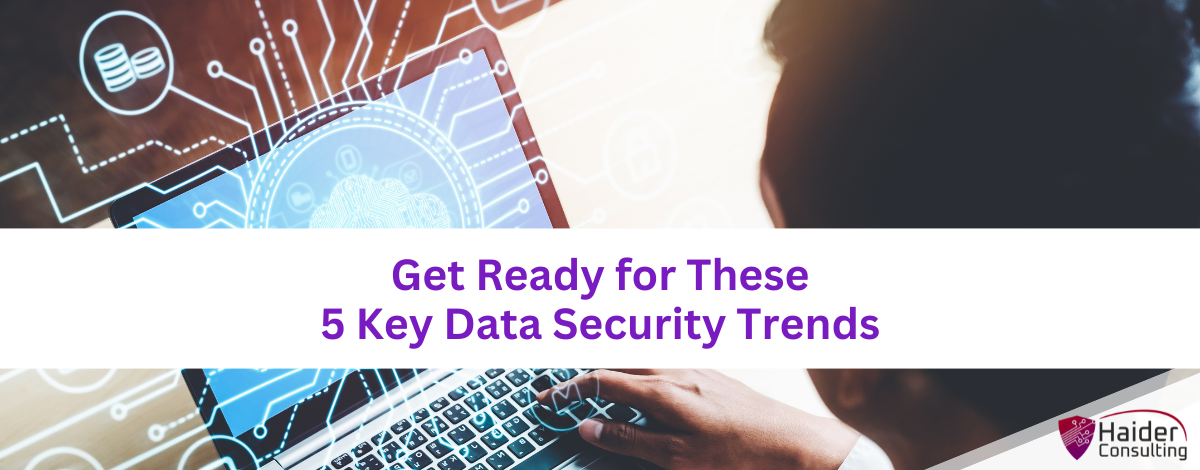As cyber threats become more complex and frequent, staying updated is essential for protecting sensitive information. In 2024, expect new developments and ongoing challenges in data security.
More than 70% of business professionals believe their efforts in data privacy are highly beneficial to their businesses.
Whether you’re protecting personal data or your company’s valuable information, keeping up with these trends is vital.
Here are some important trends to keep an eye on.
1. The Rise of the Machines: AI and Machine Learning in Security
Artificial intelligence (AI) and machine learning (ML) are already transforming cybersecurity. This year, their influence is expected to grow:
- Enhanced Threat Detection: AI and ML are great at sorting through huge amounts of data quickly. They can spot unusual patterns and security risks that humans might miss, leading to faster and more effective responses to cyber threats.
- Predictive Analytics: AI uses data from previous cyberattacks to predict future vulnerabilities and recommend preventive actions.
- Automated Response: AI can do more than just detect threats; it can also react automatically by isolating affected systems, stopping harmful activities, and initiating responses to security incidents. This automation saves time and lessens the damage from attacks.
While AI and ML are powerful, they’re just tools that need human expertise to be truly effective. Skilled professionals are necessary to analyze the data and make smart decisions.
2. Battling the Ever-Evolving Threat: Ransomware
Ransomware is a type of malware that locks your data and demands money to unlock it. It has been a major threat for a long time and will continue to be a problem in 2024. Here’s what we might see more of:
- More Targeted Attacks: Hackers will likely choose their targets more carefully, aiming at important infrastructure or businesses holding sensitive information to increase their chances of a bigger payoff.
- Ransomware-as-a-Service (RaaS): This service allows people, even those without much tech skill, to rent ransomware tools, making it easier for more attackers to get involved.
- Double Extortion: Attackers are not just locking the data; they are also stealing it. They threaten to release the stolen data if they don’t get paid, which puts extra pressure on the victims to pay the ransom.
3. Shifting Strategies: Earlier Data Governance and Security Action
Traditionally, companies have applied data security measures later in the data lifecycle, such as after storing or analyzing data. In 2024, a new approach is emerging that emphasizes earlier action:
- Embedding Security Early On: Instead of waiting until later stages, organizations are starting to integrate security controls right at the beginning of the data handling process. This includes setting up data classification levels, applying access controls, and establishing data retention policies early on.
- Cloud-Centric Security: As more organizations move their data to the cloud, security solutions will be more tightly integrated with cloud platforms. This maintains security consistently throughout all stages of data handling.
- Compliance Focus: With data privacy laws like GDPR and CCPA getting tougher, companies are putting more emphasis on data governance early on to ensure they comply with these regulations.
4. Building a Fortress: Zero Trust Security and Multi-Factor Authentication
In a world where traditional security barriers often fail, the “Zero Trust” model is becoming more popular. This approach does not automatically trust any user or device but requires every access request to be verified, no matter where it comes from. Here’s what that involves:
- Continuous Verification: Carefully check each access request, whether from inside or outside the network. The verification considers factors like the user’s identity, device usage, location, and the resources they want to access.
- Least Privilege Access: This principle means users only get the minimum level of access they need to do their jobs. This approach helps limit the damage if an attacker does get hold of a user’s credentials.
- Multi-Factor Authentication (MFA): MFA enhances security by requiring additional verification beyond just a password, such as a code sent to a user’s phone.
5. Protecting Personal Details: Biometric Data Security
Biometrics, such as facial recognition, fingerprints, and voice patterns, are now common for user authentication. However, their increasing use brings concerns about misuse and privacy issues:
- Secure Storage: It’s crucial for companies to store biometric data safely, preferably encrypted, to prevent unauthorized access or leaks.
- Tighter Regulations: Governments are likely to enforce stricter rules on biometric data collection, usage, and storage. Organizations will need to comply with these evolving regulations, ensuring transparency and obtaining user consent.
How to Get Ready for Changing Data Security Trends
Feeling overwhelmed by the changing data security landscape? Here are some basic steps you and your organization can take:
- Stay up-to-date on the latest information.
- Invest in training for your team.
- Regularly review your security policies.
- Adopt new security technologies.
- Regularly test your systems.
Book a Data Security Assessment Now!
The world of data security in 2024 will be full of new challenges and opportunities. We’re here to help you confidently navigate these changes.
Starting with a data security assessment is a great first step. Start today by contacting us!
Book My 17-Minute Call





